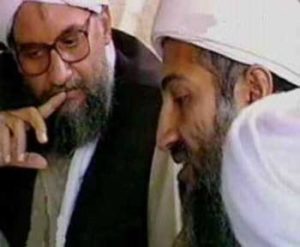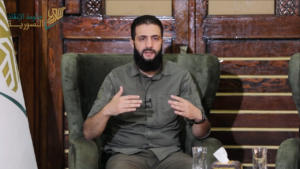Continued from here.
The fourth panel on “networks, strategy and ideology” started off with a paper by CTC’s Scott Helfstein on the dynamics of terrorist networks. Helfstein has examined six key al-Qaida plots using network analysis tools to find out why certain individuals come to play central roles in attack networks, and how attack networks change over time. He showed that people’s centrality was a function of personal attributes (skills, education) and their function in the network (weapons acquisition etc). Helfstein is one of a small but growing number of American political scientists who are applying formal methods to the theoretically starved field of terrorism studies with very interesting results (other scholars include CTC-affiliated Princeton professor Jake Shapiro).
Bill Braniff, also from CTC, presented a very interesting model for thinking about al-Qaida’s future strategic evolution. He identified five scenarios: 1) persistence (no-change), 2) horizontal escalation (concerted geographic spread), 3) vertical escalation (dedicated prioritization of mega-terrorism), 4) pursuit of loose affiliations (extending resources to Islamist groups without extending their brand-name or demanding strict adherence to their ideology), and 5) the diversification of core activities (conducting activities such as governance, da’wa, and social service provision under the al-Qa’ida banner in a addition to waging jihad).
FFI’s Petter Nesser then talked about the ideological evolution of jihadi community in Europe. He showed how the ideological and strategic dilemmas facing jihadis in the diaspora differ from those faced by militants in the Muslim world. He also argued that jihadism in Europe has undergone three distinct phases of ideological evolution. A first phase (mid- or late 1990s), different local and internationalist jihadi trends co-existed in relative harmony. In the second phase (late 1990s-2003), Europe’s jihadis were torn between “classical” and “global jihadism”. The third phase, triggered by the U.S.-led invasion of Iraq, saw the emergence of a new generation that increasingly adopted al-Qaida’s global jihadi identity.
The fifth panel included two Maghreb-focused papers and one on suicide bombings. Jean-Pierre Filiu analysed the formation and evolution of al-Qaida in the Islamic Maghreb and asked: how Maghribi is AQIM? Not very, he argued, because AQIM has essentially become an Algerian outfit with a a Saharan branch. This was despite a considerable potential for cooperation between the Algerian, Moroccan, Tunisian and Libyan jihadi communities, and despite the fact that the non-Algerian groups have historically been more integrated into al-Qaida.
Hanna Rogan presented very interesting quantitative study of AQIM’s attack patterns (see her Sentinel piece for details). She notably showed that the frequency and geographical reach of AQIM’s attacks had decreased markedly in 2008 after a spike in 2007. This suggests to me that the initial momentum gained from GSPC’s late 2006 alliance with al-Qaida is wearing off.
The third paper was presented by yours truly and looked at patterns of suicide bombings and jihadi ideologies. I argued that jihadi groups whose primary enemy is non-Muslim (irredentist or pan-Islamist groups) use suicide bombings much more frequently than groups whose primary enemy is Muslim (revolutionary or moral vigilante groups). There are in fact extremely few cases of suicide attacks by revolutionary groups (GIA, GSPC, EIJ, GI etc), despite their being jihadi salafi and very violent. To me, this shows that Robert Pape is less wrong than most terrorism/Islamism scholars think. I don’t believe literal occupation causes suicide bombings, but I think there exists a mechanism whereby people fight harder when they are confronting outsiders. The paper predictably generated a very heated debate.
The sixth panel focused on the Gulf and began with a presentation by Stephane Lacroix on apolitical Salafism (sometimes referred to as pietist salafism or Madkhalism) and its potential role as a counterweight to jihadism. Saudi Arabia and other countries (especially Jordan, Libya and Algeria) are promoting it as such, so this is a question with deep policy implications. Lacroix highlighted a crucial dilemma: On the one hand, apolitical salafis fiercely oppose global jihadism and preach absolute loyalty to governments. (Lacroix notably argued that the absence of terrorist attacks in France in recent years is partly due to the strength of apolitical salafism in France). On the other hand, apolitical salafis are socially extremely conservative and sectarian, and tend to isolate themselves from society around them. Politics is indeed not the only way to militancy; extreme puritanism or apocalypticism may also produce violence, as illustrated by the 1979 Mecca siege.
The second paper, by Sciences Po PhD candidate Asiem El Difraoui, offered an excellent analysis of al-Qaida’s propaganda dilemmas in Saudi Arabia. El Difraoui, a leading expert on jihadi visual media, argued that al-Qaida in the Kingdom had failed to mobilise Saudis for global jihad, in large part because the Saudi state itself had considerable “jihadi legitimacy” as a former supporter of jihad in Afghanistan and elsewhere.
In the last paper Norwegian Sciences Po PhD candidate Audun Wiig spoke about Jundullah, the Sunni militant group active in the south of Iran. This was in my view the best presentation of the entire conference. Jundullah is very poorly known, but Wiig has dug up a wealth of new information from Baluch blogs and regional media (though not from fieldwork, which remains impossible in Iranian Baluchistan). The discussion was even more fascinating, with Mariam Abou Zahab contributing insights on Baluch nationalism on the Pakistani side of the border.
In the final discussion the “bosses” reconvened to discuss approaches to the study of jihadi movements. There was some disagreement on the need to contextualise terrorist groups and on what “contextualization” means. This no doubt reflected differences in the purpose and focus of the three institutions; Kepel, representing a general Middle East Studies community, argued for breadth, while Sawyer, representing a more specialised institution, emphasised depth. Lia, also coming from a specialised community, leant toward the latter position, on the basis that jihadi groups are often small and not always representative of broad societal trends. However there was agreement on the value of area knowledge and primary sources, elements that have long been somewhat lacking in the terrorism literature.
I should mention that all the papers will be published in an FFI report later this spring. I will keep you posted.





2 Responses
Damn, sounds like a fascinating time. Looking forward to the Spring FFI release of the papers. Any chance those not on jihadica that were at the event can ‘guest’ blog here? Would be great to hear from them as well. Thanks again for the update and phenomenal postings.
Yes I am going to try to make that happen.